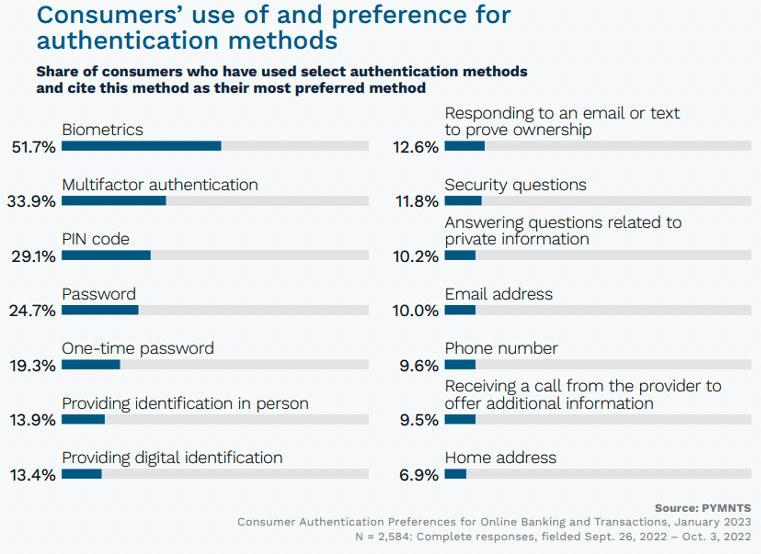
Everyone hates the outmoded authentication tool, but no one seems to be able to give it up.
The technology is there, and often already in place. But businesses and consumers alike seem to be waiting for some mass adoption tipping point toward broad movement from passwords before making the leap themselves.
This inclination is demonstrated in the March PYMNTS collaboration with Entersekt, “Visible and Invisible Security: Perceptions in Digital Banking,” which surveyed consumers about their preferred authentication methods.

Less than one out of four consumers prefer passwords, yet 65% verified at least one online financial activity or transaction using one in the month prior to being surveyed. One-time passwords are even less popular. Coupled with the threat that password use poses to businesses’ bottom line, it is a wonder the authentication method still sees regular use at all, especially as more modern alternatives are available and sometimes already in place.
Biometrics remains consumers’ favorite authentication method, with 52% of those using the tool to authenticate at least one financial transaction or activity in the month prior to being surveyed. Those who have used the method prefer it over any other. While 31% of all consumers find biometrics the most secure form of authentication, it should be noted that no fraud-fighting technique is foolproof. Multifactor authentication (MFA) is consumers’ second-favorite authentication choice. Thirty-four percent of consumers who used MFA in the month prior to being surveyed preferred the authentication method over others, and 62% who chose MFA said it provides stronger security.
In an interview with PYMNTS, Prove Chief Security Officer and Chief Information Officer Amanda Fennell explained why a multifaceted approach to digital authentication is a necessity as users start the slow progression from passwords.
“There can be a bit of a struggle with the transition,” she said. “You can have all of the knowledge but not know how to use it.”
Approaching identity in a new way, with real-time identity management, and improving digital onboarding … is where the forward-thinking people in security are already focusing,” she added.
Consumers, businesses, FinTechs and financial institutions may be impatient to move on from passwords, but there hasn’t yet been a broad embrace toward more advanced authentication. Fortunately for everyone except fraudsters, hackers and other bad actors, when that tipping point does arrive, the innovations are there for the uptake.